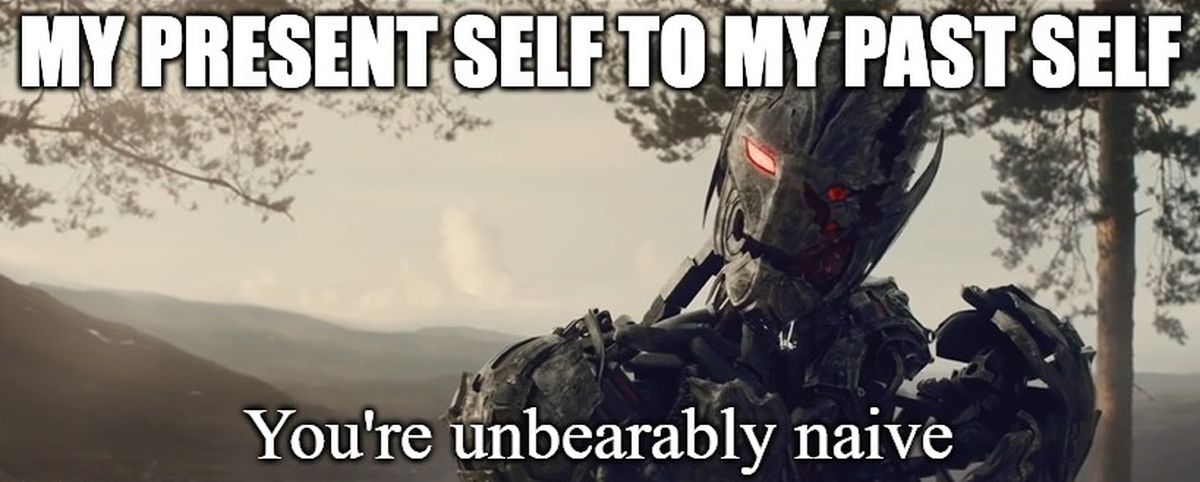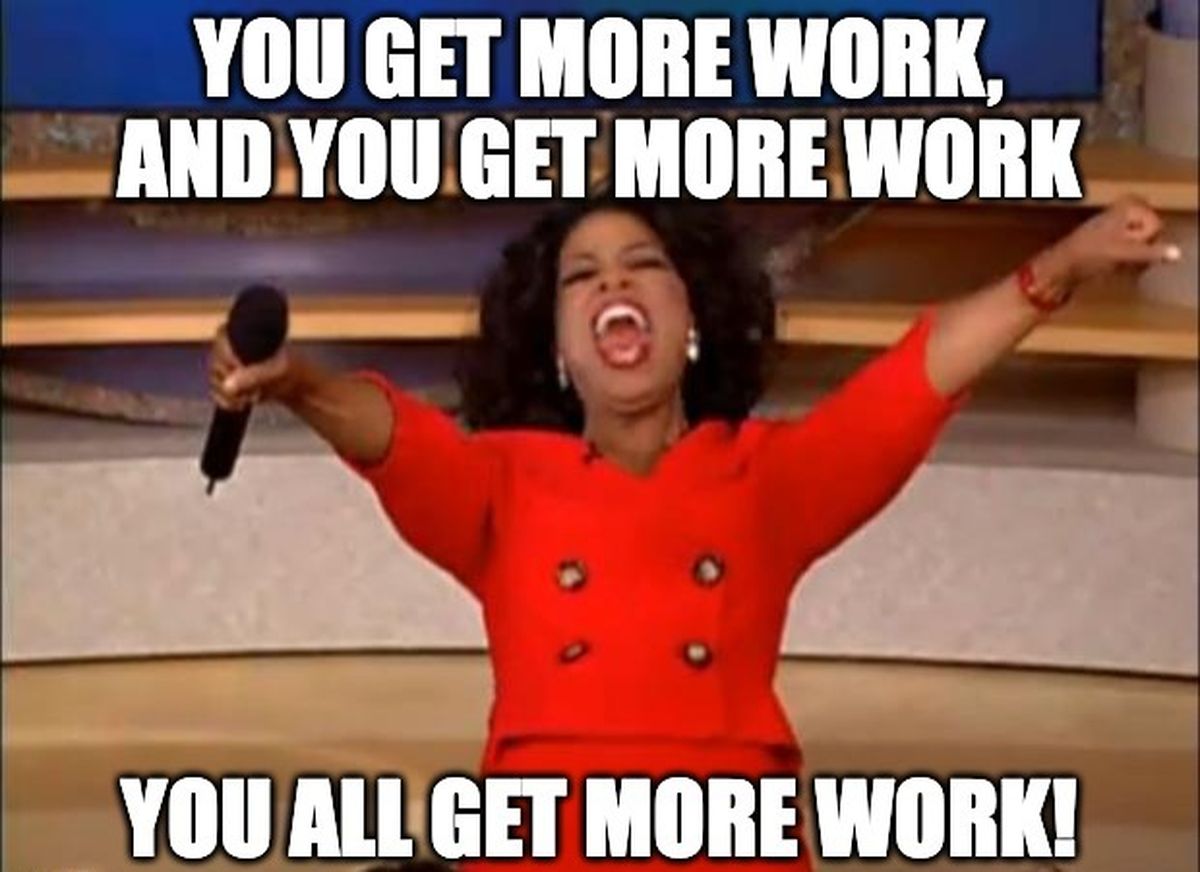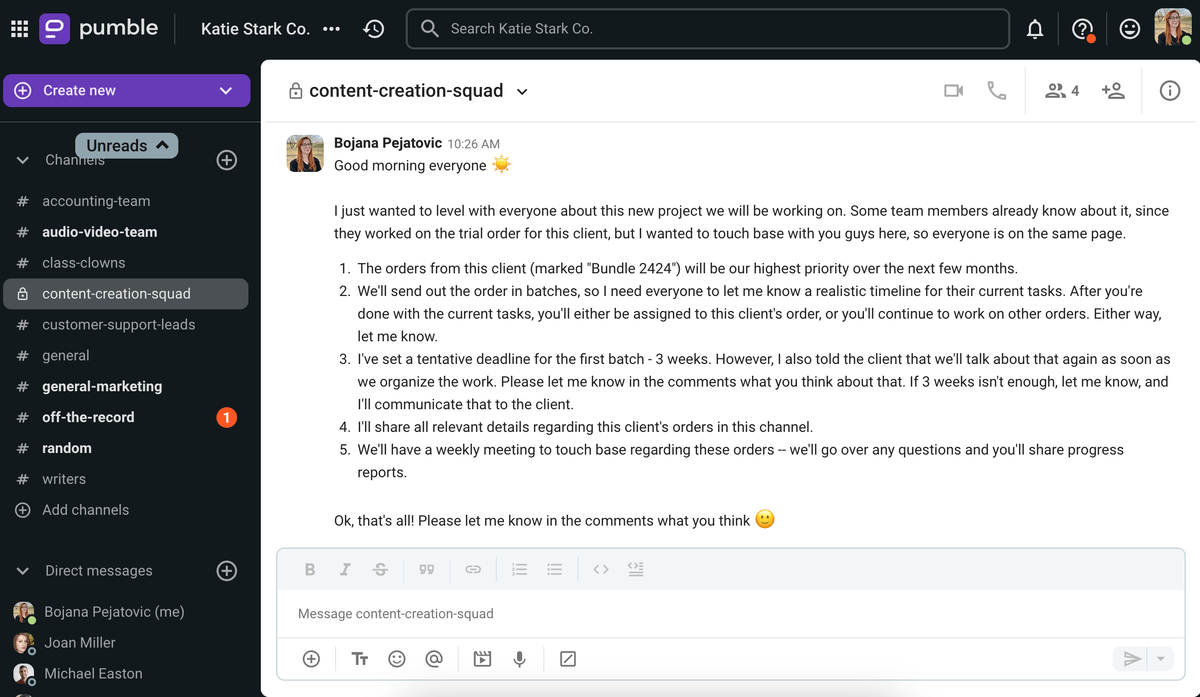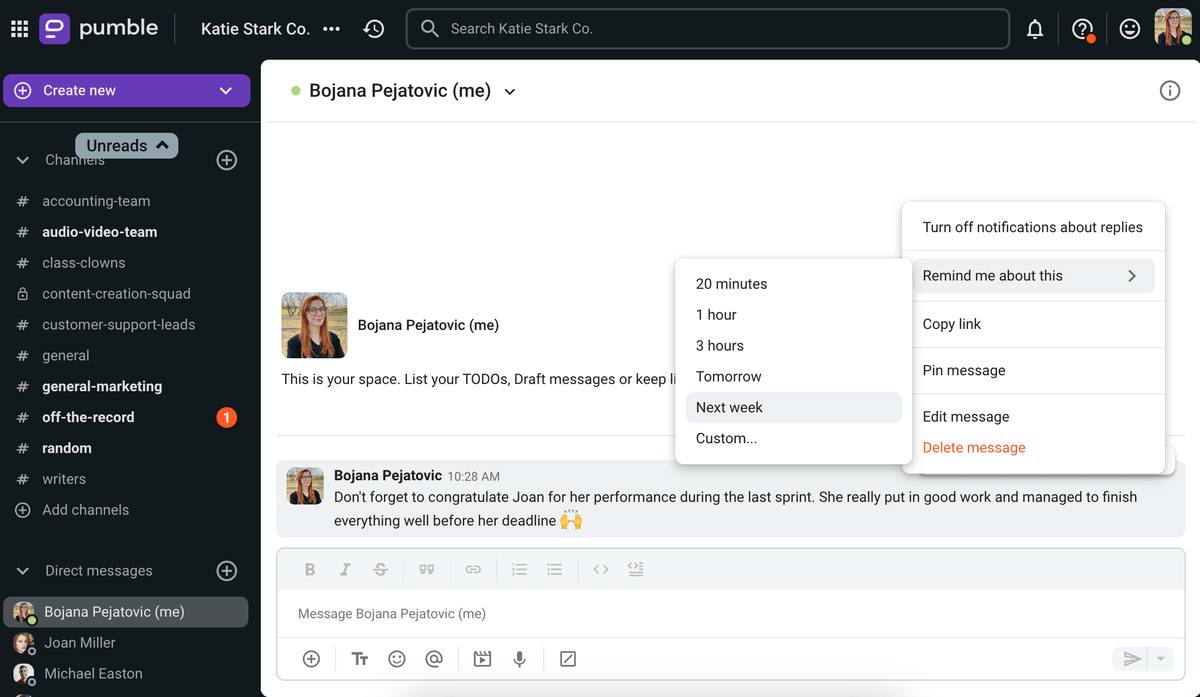When I first entered the workforce, I thought I had the secret key to the door of success — my ability to focus on a task with unrelenting vigor. I could get things done (and well, might I add) even when under immense time pressure.
Little did I know that what I considered to be my superpower would eventually (almost) be my downfall.
Here’s how, while focusing on the tasks ahead, I developed tunnel vision and forgot to look at the big picture — and why it cost me so much.

Table of Contents
Tunnel vision 101 — The creepy crawler that sweeps you up quickly
The path to success and the road to nowhere have an intersection and it’s called tunnel vision.
Tunnel vision is the tendency to strongly focus on one solution, plan, or way of thinking while neglecting all other ideas or resolutions.
It was also something I never thought could happen to me. What can I say — I was young.

But, the worst thing about tunnel vision is that it creeps up on you. You don’t go from the most open-minded person to someone overly task-oriented in the blink of an eye.
No, it’s much more subtle than that.
When I got my first promotion in a start-up company I used to work for and became the manager of a team of 15 people, I was ecstatic.
The company was a small business that provided digital services to clients and my team was the operational force behind the brand. My job was to play the middleman between the staff, the clients, and the upper management.
Looking back, I understand that I was a glorified juggler, but at the time, I thought that my job was vital for the success of the company — my decisions on how the tasks are distributed as well as my efforts to get new clients and appease the existing ones were, in my eyes, crucial.
So, I took it really seriously.
The company and its profits depended on finding clients. It was a start-up, struggling to stay afloat in the economy determined to sink it. That’s why, when a whale of a client practically fell in my lap, I did everything I could to keep him there.
Narrowing the focus (down to a tunnel)
Whales — clients who frequently ordered our product in big batches — were few and far between, but, as a struggling start-up, landing one meant we wouldn’t have to worry about staying in business for at least a few months. Landing a few meant we could grow our business — which was the ultimate goal, of course.
I spent days wooing this potential golden goose, negotiating our rates, turnaround times, and the level of service he was interested in. I emailed back and forth with him for days, and, when email was no longer effective, switched to real-time communication via communication apps — all in the hopes of swaying him our way as quickly as possible.
The sense of urgency was almost unbearable, as I constantly felt the client would slip through my fingers.
Finally, he agreed to a trial order.
It was bigger than all previous trial orders we received, which only confirmed the importance of maintaining a long-term business relationship with him. He was clearly ready to spend a lot of money on our product, provided he liked it.
I talked to my team and explained just how crucial it was to execute this order perfectly. I figured communication was important because I needed everyone on board, working together to make this happen.
In an effort to get the order done in record time — and paint ourselves in the best light — I pulled people from other tasks. This was an all-hands-on-deck situation and I figured we could afford to focus on it completely (at least for a little while).
To my absolute joy (and relief), it worked!
The client was happy with what we produced and he placed a massive order.
I won’t lie — this was my first big client that I landed and I was in 7th heaven for a few days. I felt like the best manager in the world.
And I wanted to keep that title.
Out of the tunnel and into… another tunnel?
Landing the client was amazing, but keeping him and scaling up his orders would be even better — I knew we couldn’t drop the ball now.
The stakes were too high, so the sense of urgency never subsided. I figured if we could get him to place more orders, he alone could keep us in business, allowing us to use the profits from other clients to grow.
We agreed to send out his order in batches and, in hindsight, the turnaround time for each batch was just a bit too tight. I figured it wouldn’t be a problem — we’d all push to make it happen.
I adopted a pacesetting leadership style to, as the name suggests, set the pace for my entire team. If we pushed just a little bit harder, we could send out all batches in the agreed times.
I distributed tasks for each batch as it arrived for production and took on some of the operational work myself — I figured that we’d be done more quickly that way.
Quick turnarounds were vital — something I tried to convey to everyone, frequently and somewhat aggressively.
It was also important to maintain a specific level of quality, so I also took it upon myself to go over everyone’s work. In my mind, this was a logical move — if we set a standard in the trial order and the first batch of product, we’ll have no trouble maintaining quality as we’ll have a reference point.
Or so I thought.
Overworking and underperforming
The first order went out and the client was quite pleased. However, he was shifty — constantly coming up with new demands and requesting shorter turnaround times.
I reasoned with him and thought it a victory that I managed to talk him down to maintaining the pace we established with the first order.
The pace in question was attainable — barely, but attainable.
I quickly discovered that even the best-laid plans can fail — 2 of my best workers took long vacations at the same time and I had 3 people on sick leave.
Suddenly, my “let’s just push and we’ll make it happen” strategy was full of holes — it only worked if everyone was putting their best foot forward.
In hindsight, this was something I should have calculated into my turnover time.
I also ran into another problem — even when taking into account the impact that 5 missing people would have on our output, my team still wasn’t producing as much as I thought they would.
They were working quite hard, but they weren’t performing at an expected level.
Today, this would be a massive red flag for me. If a team is overworking but underperforming, I’d do my best to pin down the causes and resolve them as quickly as possible.
But, back then, I didn’t have that knowledge. I thought my carefully mapped-out plan was more than feasible — everyone just needed to work a bit harder.

I decided to switch things up by changing my communication style. I didn’t waste time on dilly-dallying but straightforwardly communicated what needed to be done, when, and by whom. It was, in my mind, the best way to convey the importance of executing these orders on time.
I ignored the fact that the underperformance was due to my decisions and actions and told people in no uncertain terms that we would stick to the plan at all costs.
Efficiency vs Effectiveness
“At all costs” meant that a lot of other things suffered due to my drive to make the orders for this particular client go out at agreed times.
I pulled even more people from other tasks to get them to focus on this order and went over their work in detail to ensure a quality standard we set in the beginning — thus getting dangerously close to micromanaging territory.
By doing that, I achieved 2 things:
- I made my team neglect orders from other clients, which didn’t seem like a big deal at first but turned out to be the cause of an avalanche of complaints I received later, and
- I alienated my team and ruined what was once effective communication with my near-dictator-like style.
Of course, I didn’t see that straight away. In my tunnel vision-induced haze, I thought nothing of it.
That is until my best performer told me they were overworked and needed a break. To add salt to the wound, they also said they felt underappreciated.
I was certain of their integrity as an employee, so I couldn’t chalk up their statements to laziness. I knew their words had merit.
So, I couldn’t ignore the fact that my actions had significant consequences.
I took a closer look at the work everyone did over the past few months as well as my communication with them and had to face the bitter truth — I messed up.
Pulling the Blinders OFF
I prioritized efficiency over effectiveness due to tunnel vision. I couldn’t see anything other than the importance of this client, and I let a lot of things slip through the cracks.
As mentioned, I ended up with quite a few unhappy clients whose orders were late because I pulled someone from working on them, and with an unmotivated team who was displeased by the pace I set.
I placated the clients quickly with a lot of apologetic emails and quite a few discounts.
But I had a bigger issue of what to do with my team.
In my task-oriented haze, I completely neglected the people who were actually doing the work. I kept pushing them without giving them the recognition they deserved.
What’s more, I excluded them from decision-making and completely neglected to get their feedback on the new way of doing things.
Once the haze lifted, I realized I had many mistakes to undo:
- My team no longer had trust in me, because I allowed it to deteriorate by putting more focus on productivity than I was on the actual people,
- They no longer worked as a unit, because they didn’t have the time to collaborate,
- The team was in disarray because I put relationship building and teamwork fostering on indefinite hold,
- They were unmotivated and disengaged, because I failed to inspire and motivate them, and
- I showed zero empathy by spending months telling them to “push” and nothing else.
The irony of applying myself so hard to achieve something only to fail on another front (or multiple fronts) didn’t escape me, but I didn’t know what to do about it.
The light at the end of the tunnel: People-based focus
I ended up putting on my big girl pants and scheduling an all-hands meeting to take accountability for my actions and basically apologize to my team for treating them so poorly.
As a young manager who did spend time building a good relationship with the entire team before this incident, I was devastated by my actions. Even though my actions resulted in quite a bit of profit for the company, I felt like I betrayed not only my team but also everything I stood for.
Remember that high from the very beginning, when I thought I was on top of the world? Well, I definitely felt like I came crashing down — hard. The guilt and shame almost ate me up, but, in hindsight, it was a great learning opportunity. I’m just sorry it had to come at the expense of my team.
I now know that good managers and leaders are able to balance their task-oriented tendencies with a focus on people. They can get things done while also keeping the lines of communication with their teams open, empowering their employees, as well as inspiring them to strive for the better and develop further.
In short, I now value effectiveness over efficiency.
I’m also less inclined to lose myself in tunnel vision — by following a few strategies.
Following visions rather than plans: How I’d beat tunnel vision
The good thing about this situation is that it completely eradicated the “my way or the highway” mindset from me.
For example, if my current self was in the situation I described in this article (rather than my fresh-out-of-university past self), I’d do quite a few things differently:
- Involve the team in the decision-making — I’d set a video conference meeting with my entire team, to consult with them about the turnaround times. Even with my help with operational tasks, they are ultimately the ones who’d be executing the majority of them, so their opinion on how quickly they’re able to do it should matter.
- Ask for feedback — I’d ask for explicit constructive feedback both at the beginning and throughout this ordeal to avoid the drop in quality of work as well as disengagement.
- Develop a positive environment — Instead of bringing communication to a minimum to avoid distractions and only communicating how urgent the tasks ahead are, I’d practice transparent communication and create an atmosphere where everyone feels comfortable voicing their opinions.
- Recognize the hard work — Praising employees and giving them recognition for their work, thus fostering their job satisfaction and motivation would be high on my list of priorities.
- Get over myself — Finally, just because I made a plan, it doesn’t mean it’s perfect. Today, I’d definitely take a second (and third and hundredth) look at my plan, looking for the red flags I ignored in the past and adjusting accordingly. Even in a leadership role, I’m just one piece of the puzzle.
Get back on the road to success: Discover Pumble
To be completely fair to my past self, I didn’t have the skills nor the tools to execute all of the above. Sure, a lot of my mistakes were due to my lack of knowledge and experience, but some of them could have been avoided if I had the proper tools.
The tool I wish I had back then is Pumble.
Pumble, an all-in-one team communication app, would allow me to keep the communication lines open between me and my team.
I could use channels, for example, to clearly and effectively communicate with the entire team and keep everyone on the same page. These channels would also be a great place to share information, get the team’s opinion on things, and receive feedback.

Furthermore, I’d also be able to keep myself accountable.
By setting daily or weekly reminders to ask for feedback or congratulate employees that really applied themselves in the past week or so, I’d be less likely to slip into task-oriented tunnel vision.

What’s more, all of these exchanges on Pumble would help me build trust in my team and bond with my coworkers.
Pumble was created with teamwork in mind, and as such, is the perfect, affordable, all-encompassing collaboration tool for small and medium businesses. It’s not a cure-all for tunnel vision, but it can definitely help.
And, if you want to take things a step further, you can get Pumble along with its time tracking and project management companions, Clockify and Plaky. All 3 tools are a part of the amazing and super affordable CAKE.com productivity bundle that can help you rid yourself from inefficiency once and for all!
Get out of the tunnel and embrace the light — try Pumble for free today!




